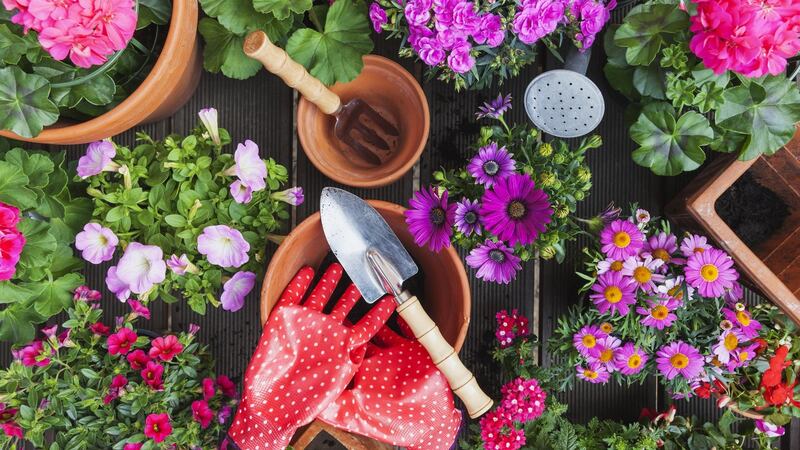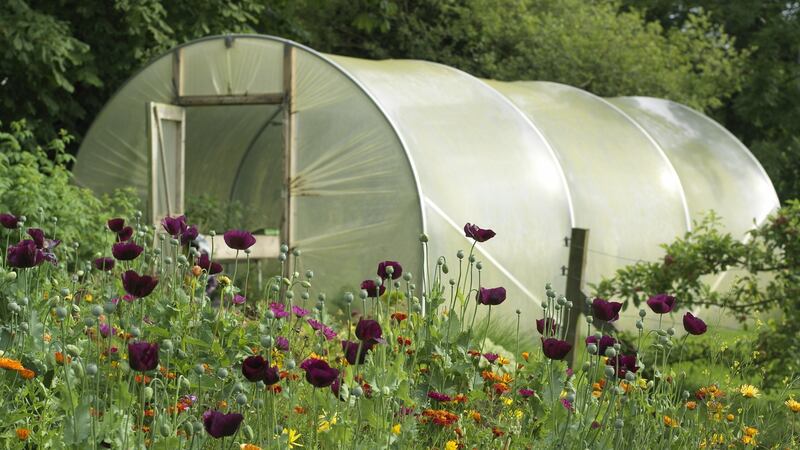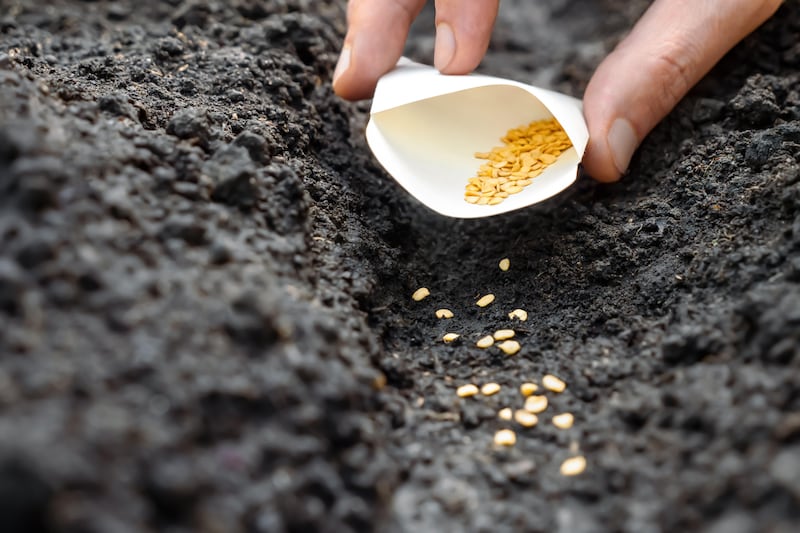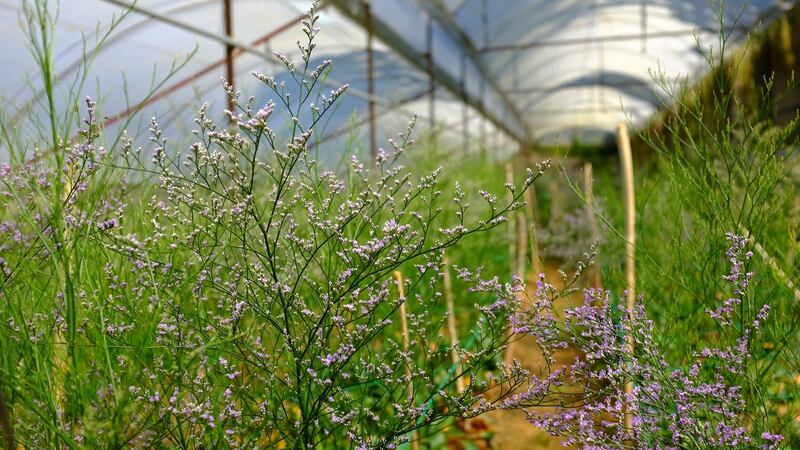After a winter that felt never-ending followed by what can only kindly be described as a micro-summer, few of us are in the mood to think about jobs for the autumn garden. But needs must. Put the work in now and we get to reap the benefits in the months to come, whether that’s healthy, weed-free, nourished soil, a polytunnel heaving with home-grown produce or armfuls of cut flowers to bring indoors.
Place your order for spring-flowering bulbs this month, for example, and you’ll get to enjoy first dibs when it comes to the choicest varieties from reliable suppliers who place a strong emphasis on sourcing healthy, certified disease-free bulbs. That’s especially important this year given how commercial bulb production across much of Europe has been so badly impacted by last winter and spring’s poor weather and waterlogged soils.
Certain species of spring flowering bulbs – narcissus being a very good example – are also much better planted in early autumn, another reason to order soon. So is the spectre of another sodden autumn like last year’s, where the ground was so wet that it was impossible to dig or work it.

Recommended suppliers include Dublin-based mrmiddleton.com, which sources a wide range of high-quality bulbs from trusted producers across Europe; Cork-based fruithillfarm.com which offers a small, certified-organic range; and peternyssen.com. Examples of flower bulbs that should be planted in autumn include varieties of the aforementioned narcissus (daffodils), allium, fritillaria, iris, tulip, snowdrop, lily, and crocus (store tulip bulbs in a cool, dry, dark place and plant them in November to minimise disease).
As crops in allotments and kitchen-gardens are harvested over the coming weeks, this is also the time to think ahead in terms of preventing weed growth and nurturing soil health, resilience and fertility. Avoid the common mistake of leaving beds empty, which leaves the soil very vulnerable to erosion and nutrient loss as well as to weed germination. Instead cover it with some kind of mulch (examples include cardboard, home-made garden compost, well-rotted farm manure, leaf mould).
Alternatively, sow a green manure crop to protect and nourish the soil as well as to help suppress pests and diseases. Examples of hardy green manures that can be sown in August and left to overwinter before being cut back as a mulch/lightly dug into the ground in spring include phacelia (Phacelia tanacetifolia, not fully hardy in very cold winters); crimson clover (Trifolium incarnatum); Essex red clover (Trifolium pratense); winter field bean (Vicia faba); winter tares (Vicia sativa); poached egg plant (Limnanthes douglasii); and alfalfa (Medicago sativa). Stockists include Cork-based organic supplier fruithillfarm.com, which carries an extensive range.
If you have a polytunnel, glasshouse or even a large, cold frame, then August is also the month to sow seeds of a variety of delicious crops to keep it well stocked over the winter months. Examples include hardy/winter lettuce varieties such as ‘Winter Density’, American landcress, lambs lettuce, chard, chicory, winter purslane (claytonia), rocket, oriental mustards, mibuna, mizuna, tatsoi, pak choi, choy sum, komatsuna, radishes, kohlrabi, salad onions and spring cabbage.
But make sure to initially protect the freshly sown seed from high temperatures, which at this time of year can inhibit germination or cause premature bolting. For this reason it’s best to sow outdoors in the cool of the evening into seed trays or modules filled with a good-quality seed compost and placed on a table to protect the baby seedlings from slug and snail damage. Klasmann peat-free seed compost (available to order online from quickcrop.ie and fruithillfarm.com) gives outstanding results, while an excellent range of seeds can be ordered online from brownenvelopeseeds.com, greenvegetableseeds.com and theorganiccentre.ie. For a wealth of useful, planet-friendly tips on kitchen gardening under cover throughout the year, see the long-running blog of Dublin organic gardener and grower Nicky Kyle at nickykylegardening.com

August is also the month to go forth and propagate in other ways. In milder parts of the country (or if you can offer them winter cover), you can sow seed of different kinds of hardy flowering annuals such as cornflower (Centaurea cyanus), annual scabious (Scabiosa atropurpurea), bishop’s weed (Ammi majus and Ammi visnaga), Queen Anne’s lace (Orlaya grandiflora), Californian poppies (Eschscholzia californica), corncockles (Agrostemma githago), Salvia viridis (ornamental sage) and honeywort (Cerinthe major) towards the end of the month. This is also an excellent time of year to take semi-ripe cuttings of a wide variety of decorative species of hardy perennials, shrubs, climbers and trees.
To novice gardeners, this process of propagating new plants from seed and cuttings can sound akin to some strange sort of voodoo. But not only is it magical, hugely rewarding and yet more proof of nature’s boundless generosity, it’s also a wonderful way to source abundant stock of varieties that aren’t easily available to buy in garden centres or nurseries.

Again, the growing medium used is crucial to success. For seed sowing of decorative species, I use Klasmann’s peat-free seed compost as mentioned above with a generous handful or two of fine-grade vermiculite worked through the top few inches. This boosts germination, helps with porosity and drainage and insulates baby root systems from cold and wet. Rather than seed trays, I use a three-litre pot capped with an upturned five-litre clear freezer bag sealed around the rim with an elastic band. Just make sure to bottom-soak the pot for several hours immediately after sowing and then place it in a bright protected spot away from extremes of temperature and direct intense sunshine. Once germinated seedlings have produced their first true leaves, I then prick them off into modules or cell trays.
For semi-ripe cuttings, use fresh, healthy, non-flowering/non-fruiting shoots, picked early in the morning when the plant tissue is fully refreshed after the cool of the night, and only with the permission of the plant’s owner. Speed is of the essence. If you can’t prep them straight away, then place the stems into a sealed freezer bag along with a few drops of water and in a cool place until you get home. Then cut them to lengths of 10cm-15cm and to just below a node, gently stripping the lower leaves, and nipping out the soft tip.
An extremely free-draining growing medium is also key. Some gardeners use a mix of potting compost, vermiculite and horticultural grit, while others use just pure horticultural grit. To further encourage quick rooting, place your cuttings around the edge of the pot and as described above for seed-sowing, cover them with a sealed clear plastic bag. The guiding rule to bear in mind here is “bottom warm, surface cool”. So if you’re the proud owner of an electric propagator, this is a great time to put it to good use.
This week in the garden
Compost heaps can quickly become smelly at this time if not thoughtfully managed. So make sure to add alternating 15cm layers of carbon and nitrogen-rich material and to aerate them by turning them with a pitchfork every couple of weeks.
Give summer pot displays and hanging baskets a fresh lease of life by carefully deadheading and cutting away any dead, damaged or diseased growth and then drenching their root-balls by soaking them in a solution of liquid seaweed. Fill any obvious gaps with a few late-flowering species such as dahlia, fuchsia, rudbeckia and gaura and salvia.
Dates for your diary

Saturday, August 24th: Neantóg Farm, Cliffony, Co Sligo. Growing in Polytunnels, a one-day workshop with the organic gardener and grower Hans Wieland, neantog.com;
Also Saturday, August 24th (3pm-5pm): St Patrick’s Primary School, Church Road, Greystones. The Annual Delgany & District Horticultural Society’s Dahlia Show takes place with a wide variety of exhibition-standard dahlias on display. Entries are welcome, please email ddhs.showentries@gmail.com on or before Thursday, August 22nd.
















